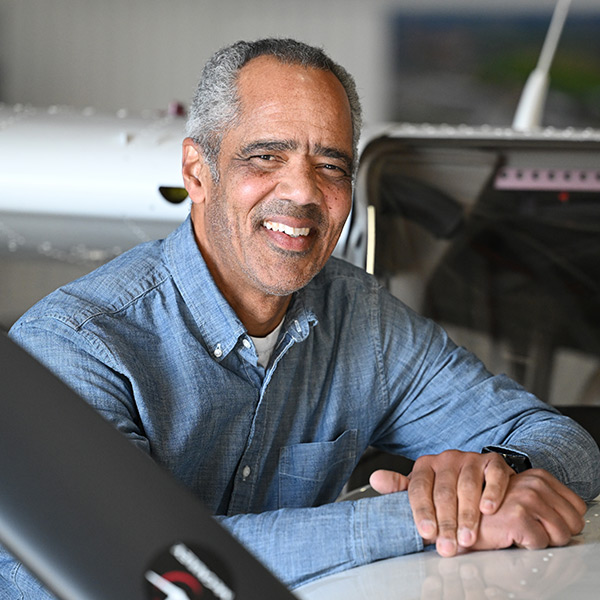Unlimited Class opts out of Roswell races
Unlimited Class racers, the fast, charismatic, and often highly modified World War II-era fighter aircraft that have highlighted the National Championship Air Races since the event began in 1964, will not be flown in this year’s competition in Roswell, New Mexico. The move raises questions regarding how the loss of the flagship contest might affect the races’ overall appeal.
The Reno Air Racing Association, longtime producer of the annual event, announced the withdrawal August 15 in a joint statement with Unlimited Class racing teams. The popular Sport Class, which is made up of high-performance kitbuilt airplanes and made its debut at the Reno Air Races in 1998, announced on July 18 that it would pause its participation for 2025. The withdrawals leave the races with five classes: Formula 1, Jet, Biplane, T–6 and the short takeoff and landing drag race introduced as a competition class in 2021.
Steven Hinton, a seven-time winner of the premier Unlimited Gold race at Reno and a spokesperson for the Unlimited Class, echoed the sentiment that his group would return for the races next year.
“The decision not to participate in the 2025 National Championship Air Races was not made lightly,” Hinton said. “The Unlimiteds are deeply woven into the fabric of air racing, and though we’re unable to participate this year, we look forward to working with RARA toward our return to the races in 2026.”
Unlimited Class aircraft and their pilots, with big personalities and seemingly daredevil swagger, have defined air racing since competition resumed after World War II. Pilots initially revived the annual Cleveland National Air Races that began in 1929 and halted during the war. While exotic purpose-built racing prototype aircraft including the Granville GeeBee Model R Super Sportster and Laird-Turner Meteor LTR–14 dominated during aviation’s golden age between World War I and World War II, modified military fighter aircraft set speed records and became the main attractions during the postwar Cleveland events. Soon, though, increased residential development, safety concerns, and a major accident during the 1949 event marked the end of racing in Cleveland.
By 1964, enthusiasm for restarting the national races had gained significant momentum and organizers hosted the first Reno National Air Races at Sky Ranch Airport near Sparks, Nevada. After two years the races moved to Stead Air Force Base, known today as Reno-Stead Airport. The new site turned out to be the ideal venue for the next several decades, mainly because the recently decommissioned base encompassed enough land to almost completely enclose the eight-mile racecourse that the Unlimited Class aircraft used. Race organizers could tailor the course to suit their needs.
From the beginning, Stead Field, as it was often known, was a major step up from Sky Ranch, which was a desolate, dusty, dirt strip with few comforts. “There was nothing there,” Telling told AOPA. “If you look at the old films you can see the spectators sitting in lawn chairs.” Stead may not have been luxurious either in the early days, but it had lots of room for improvement, and became increasingly accommodating, with vast grandstands, luxury boxes, and tents and booths for a range of vendors. Eventually everything from hot dogs and clothing to aircraft and accessories was for sale at the Reno races.
Still, Stead’s most attractive feature was its location, which combined open space with proximity to numerous hotels, casinos, restaurants, and entertainment. “We had rooms aplenty,” Telling said, and spectators could shuttle quickly and conveniently between the racecourse and downtown Reno. Many of the top racers hail from California and other states west of the Rocky Mountains, and have been able to fly their speedy racing aircraft to Reno within an hour or so, making the logistics remarkably easy.
In some ways, Roswell Air Center is a return to the past. Some pilots have voiced concerns regarding alleged shortcomings of the field, from the lack of airport infrastructure, hotels, and restaurants to power lines near the courses and the longer distance between the race courses and the runway. There was no mention of specific issues in the joint statement from RARA and the Unlimited pilots, however, and Telling said Roswell was the best option among the three finalists, including Pueblo, Colorado, and Casper, Wyoming, vying to become the event’s new host city.
“In the end, we chose Roswell largely because it was the safest of the venues available,” Telling said, adding that while there are challenges to relocating the races, he believes the effort will succeed with the five remaining competition classes.
“We have a lot of lessons to learn and a lot of issues to work out, but we are still racing,” he said.




